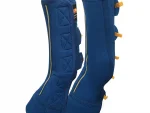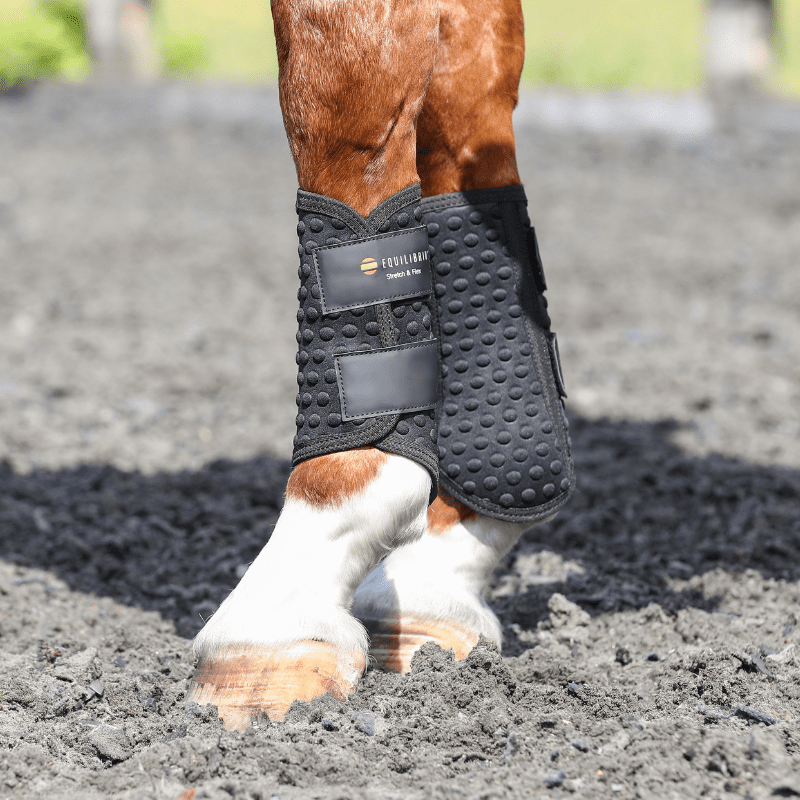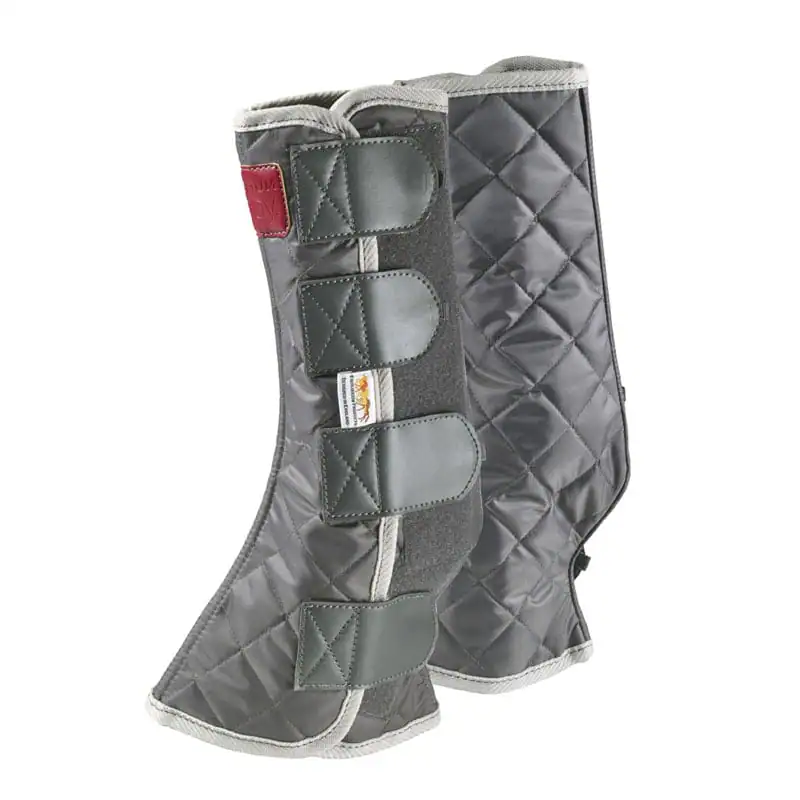1 year product guarantee
Free delivery on most orders over £40
Rated 4.9/5 stars on Feefo

Researched & tested products

Innovating for over 20 years!
Supporting Redwings Horse Sanctuary & Brooke
Feefo Gold Trusted Service Award Winner
Get more time to pay with Klarna
A Guide to Horse Boots, Wraps and Chaps
Why use horse boots, wraps and chaps?
With so many boots available, finding the right boots for your horse can be confusing.
As riders and horse owners, we ask our horses to live and work in ways that they would not in the wild. This may be working harder, in different ways, with more repetition, on surfaces, carrying a weight and wearing horse shoes.
As a result we need to provide them with leg protection against injury from external impact, self-inflicted harm, and stress-related problems.
Why wear horse boots?
The current fashion trend for ‘matchy-matchy’ should not be the reason to ‘dress’ your horse in boots.
First and foremost, horse boots, wraps, chaps and bandages are worn to protect the horse’s legs from injury. Leg injuries can be caused by brushing, knocks, grazes, over reaching, penetration and concussion.
But the use of horse boots and bandages can itself cause problems associated with:
- Heat and moisture retention
- Restriction of movement or blood supply
- Excessive weight on the leg
It’s important to weigh up all these factors when deciding what boots to choose for your horse.
Does your horse actually need to wear boots at all?
Consider the level of work you are doing and the complexity of the work. Dressage horses may not need the same protection as a show jumper or event horse.
Minimise Risk – Consider the Negatives of Wearing Horse Boots
To minimise risk, boots should be chosen not only for the protection and support they provide, but also for the extent to which they keep the leg cool. This can be achieved by the use of modern breathable fabrics, combined with careful design and construction of the boot. The boot should allow air to flow from the leg though the boot to prevent heat build up. Overheating horses’ legs can cause long term tissue damage.
Choose boots that are made of breathable fabrics. There are a lot of modern technical fabrics that actually actively allow the legs to remain cool as they exercise.
Adding small amounts of weight to the end of the leg in the form of a boot increases the effort the horse must put in to move. A heavy boot or one which retains water or moisture can lead to injuries caused by tiredness.
Wherever possible choose a lightweight boot that’s comfortable for the horse to wear. Check that the boots are made from materials that won’t absorb and hold water when going through puddles, long grass or cross country.
If boots are constructed of inflexible (i.e. stiff) material or if boots are applied too tightly, they have the potential to restrict joint movement.
Look for boots made with flexible fabrics that move with the horse’s natural movements. Boots, wraps or bandages should be flexible and not applied too tightly.
So now we know what features and design elements to look for when choosing horse boots, let’s look at what boots to wear when!
HORSE BOOTS, WRAPS and CHAPS… What to wear and when.
Category
Horse Care & Equipment, Our Products, Tack Matters, WellbeingHorse Boots
Features & Benefits: Boots offer a choice for every discipline at any level from amateur to professional. Convenient and easy to use, with superb protection without restriction.
Ideal for: Schooling, flatwork, jumping, hacking, galloping, eventing, everyday use.
Leg Wraps
Features & Benefits: Designed for soft, flexible protection and support during exercise. Combine the support offered by an exercise bandage and the convenience of a boot. Offer flexible protection that moulds to the exact contours of the horse's legs allowing complete freedom of movement. Eliminates rubs and chaffing caused by hard, ill fitting boots.
Ideal for: Schooling and hacking.
Horse Chaps
Features & Benefits: Designed to offer your horse's legs extra protection during turnout or stabling. Chaps extend down over the pastern, coronary band and sensitive heel area to provide extra protection to these vulnerable areas.
Ideal for: turnout, mud fever prevention, leg protection in the stable.
Why not take a look at...
View all products-
 Equi-Chaps Close Contact Chaps£54.99 View product
Equi-Chaps Close Contact Chaps£54.99 View productEqui-Chaps Close Contact Chaps
Save time, maintain healthy skin and keep mud away with…
-
 Stretch & Flex Flatwork Wraps£54.99 View product
Stretch & Flex Flatwork Wraps£54.99 View productStretch & Flex Flatwork Wraps
Soft, comfortable & breathable schooling boots. Flexible schooling wraps designed…
-
 Equilibrium Magnetic Chaps£79.99 View product
Equilibrium Magnetic Chaps£79.99 View productEquilibrium Magnetic Chaps
Magnets where YOU want to support mobility, aid joint function…
